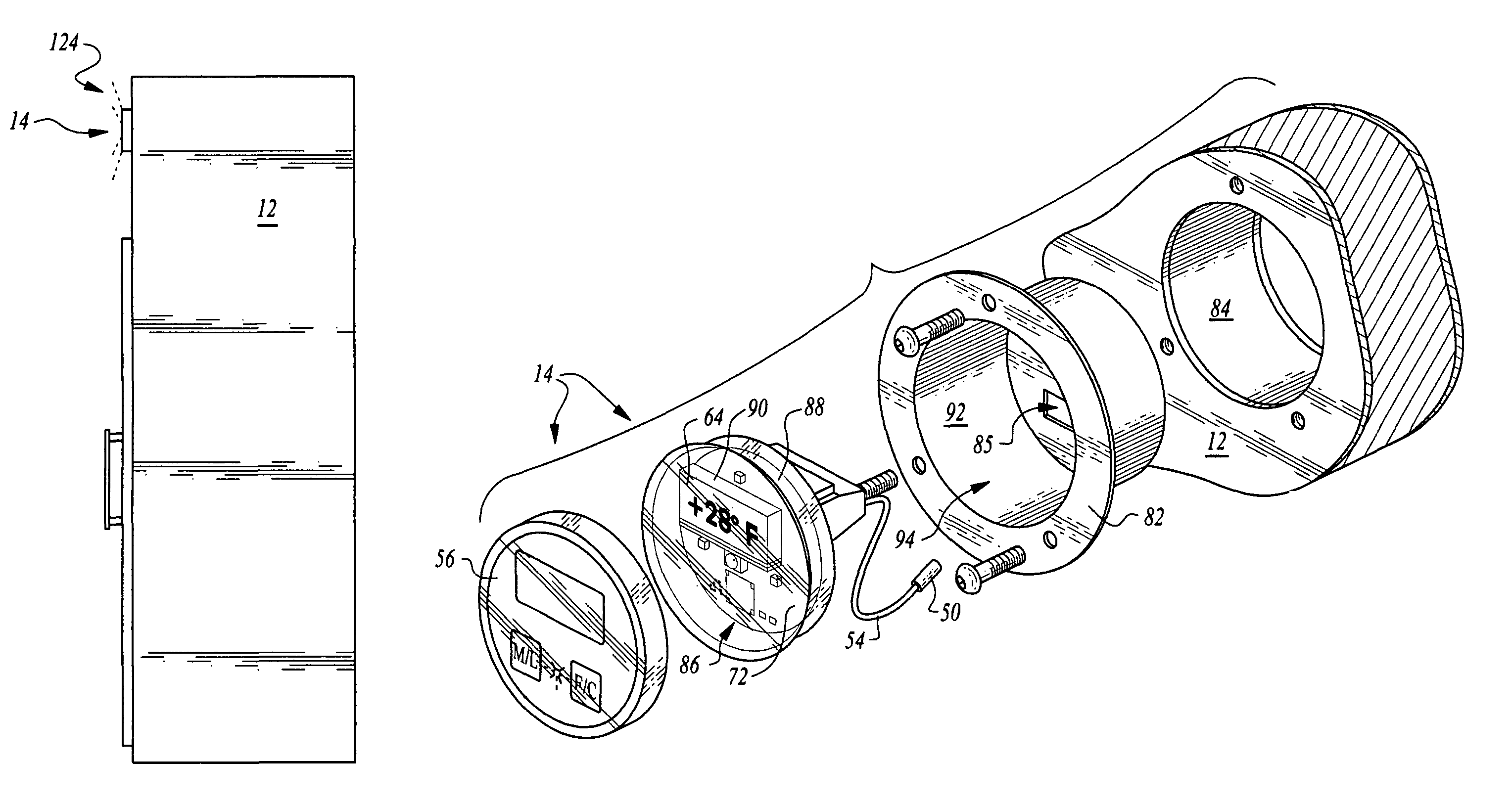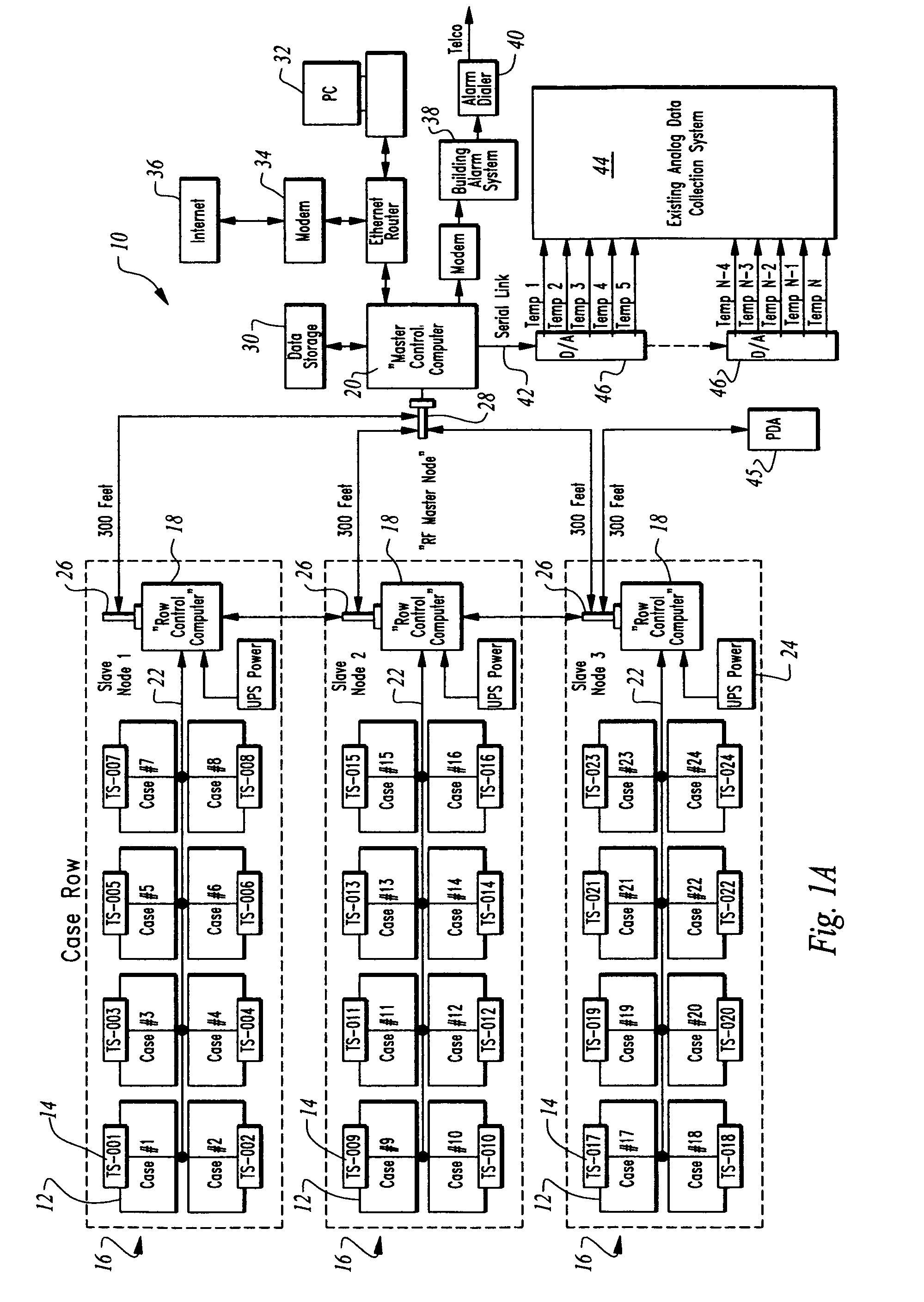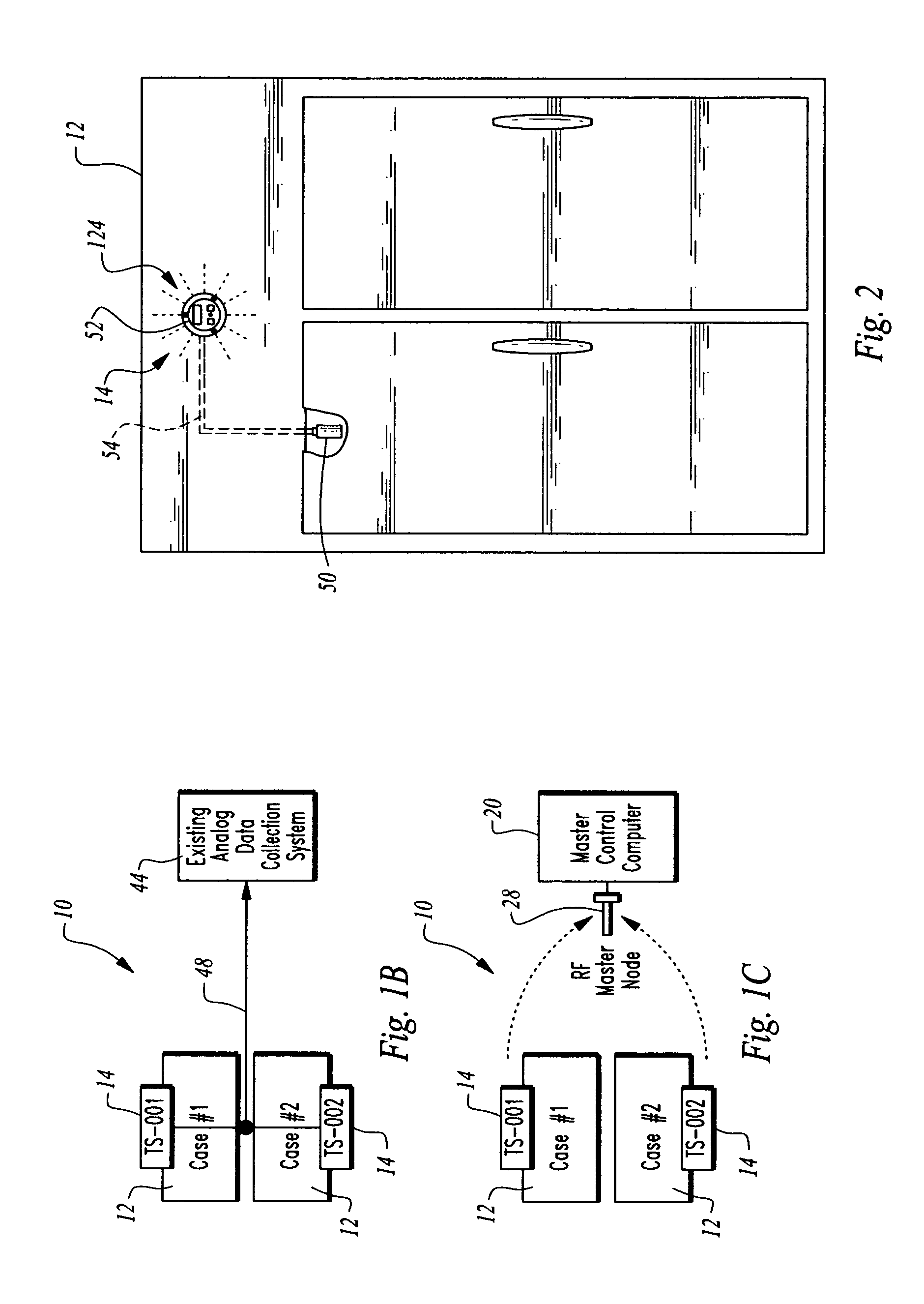Refrigeration temperature monitoring system and associated temperature display
a technology of refrigeration temperature monitoring and associated temperature display, which is applied in the field of refrigeration systems, can solve the problems of difficult to find, cold case to enter a defrost mode, and the thermometer is often insufficient to alert store personnel
- Summary
- Abstract
- Description
- Claims
- Application Information
AI Technical Summary
Benefits of technology
Problems solved by technology
Method used
Image
Examples
Embodiment Construction
[0026]Referring to FIG. 1A, an overview of the inventive refrigeration temperature monitoring system 10 is shown as it might appear in operation at a large retail food establishment. In this example there are 24 total cold cases 12 where each case employs its own temperature display 14, and the cold cases 12 are divided up into rows 16 of eight cases each. The monitoring system 10 could be expanded to monitor any number of cold cases, which is especially crucial in large warehouse retail establishments, such as Costco® stores, where there might be 75 cases or more to monitor. Each temperature display has its own identifying serial address (TS-001, TS-002 . . . TS-024) so that any individual temperature display 14 can be readily identified to determine the particular temperature condition of a cold case 12. The sensors have a unique-in-the-world 64-bit digital ID, which is programmed into them that allows 1.8×1019 possible sensor IDs. This provides for individual identification of ea...
PUM
| Property | Measurement | Unit |
|---|---|---|
| distance | aaaaa | aaaaa |
| length | aaaaa | aaaaa |
| temperature | aaaaa | aaaaa |
Abstract
Description
Claims
Application Information
 Login to View More
Login to View More - R&D
- Intellectual Property
- Life Sciences
- Materials
- Tech Scout
- Unparalleled Data Quality
- Higher Quality Content
- 60% Fewer Hallucinations
Browse by: Latest US Patents, China's latest patents, Technical Efficacy Thesaurus, Application Domain, Technology Topic, Popular Technical Reports.
© 2025 PatSnap. All rights reserved.Legal|Privacy policy|Modern Slavery Act Transparency Statement|Sitemap|About US| Contact US: help@patsnap.com



